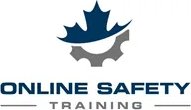Lone Worker Safety Online Course
$29.99
This Lone Worker Safety online course is designed to equip employees who work alone with the knowledge and skills to stay safe in isolated or remote work environments. The course covers risk assessment, hazard identification, emergency response planning, communication protocols, personal protective equipment (PPE) use, and both employee and employer responsibilities. It emphasizes preventative measures, situational awareness, and procedures for handling emergencies such as medical incidents, workplace violence, or equipment failures. Ideal for field workers, security personnel, drivers, store clerks and remote employees. This training ensures that lone workers can operate safely and respond effectively to potential risks.
Lone Worker Safety Online Course Outline:
- Definition of a Lone Worker
- Employer and Employee Responsibilities
- Legal Requirements
- Risk Assessment and Hazard Identification
- Control Measures and Safe Work Practices
- Lone Worker Safety Monitoring
- Lone Worker Safety Case Studies
Lone worker safety is crucial for protecting employees working alone, ensuring compliance wth regulations, and fostering a positive work environment. A well-defined lone worker safety policy helps mitigate risks, reduce accidents, and provide peace of mind for both workers and employers.
Here's why Lone Worker Safety is so important:
- Lone workers are more vulnerable to accidents and injuries due to the lack of immediate supervision or assistance.
- They may also be exposed to unique hazards in their work environment, such as violence, stress, or environmental risks.
- Organizations have a legal obligation to ensure the safety and well-being of all employees, including those working alone.
- Occupational Safety and Health Administration (OSHA regulations, like those outlined in code 1915.84, require employers to account for employees working alone.
- A well-structured lone worker safety policy demonstrates an employer's commitment to employee well-being, boosting morale and trust.
- This policy also provides a framework for managing risks and implementing effective safety measures, leading to a safer work environment.
- By proactively addressing lone worker safety, organizations can minimize the risk of accidents, injuries, and potential legal actions.
- This can lead to reduced costs associated with workers' compensation, legal fees, and reputational damage.
- Lone worker safety policies provide a framework for monitoring employee well-being and responding to emergencies, offering peace of mind for both the worker and the employer.
- This can lead to increased job satisfaction and retention, as employees feel valued and supported.

Click here for more information on Lone Worker Safety requirements in Canada.




